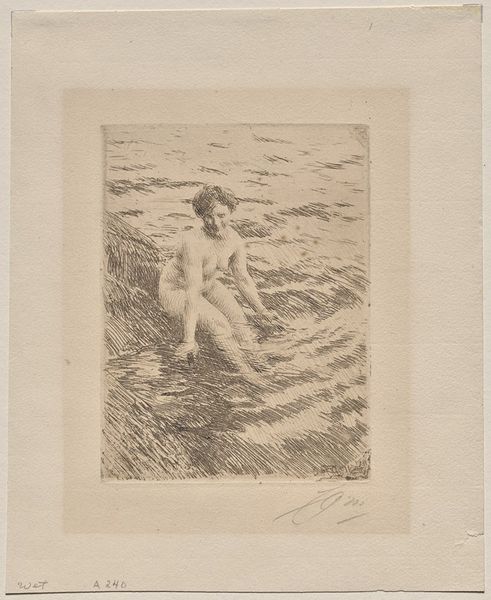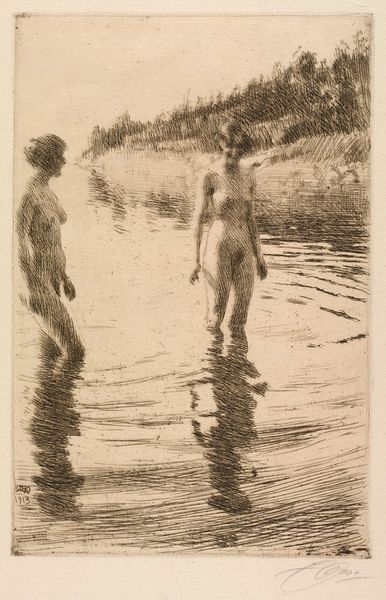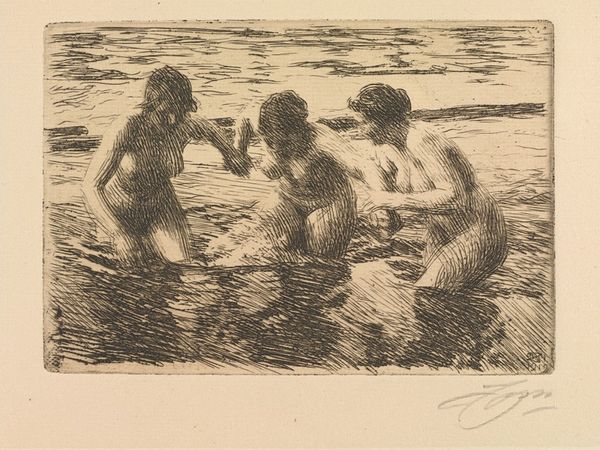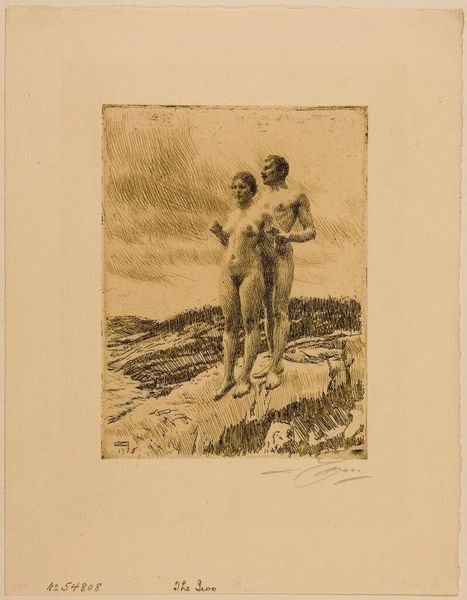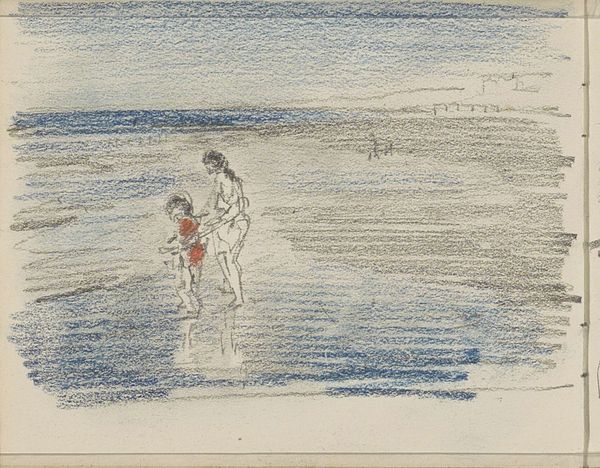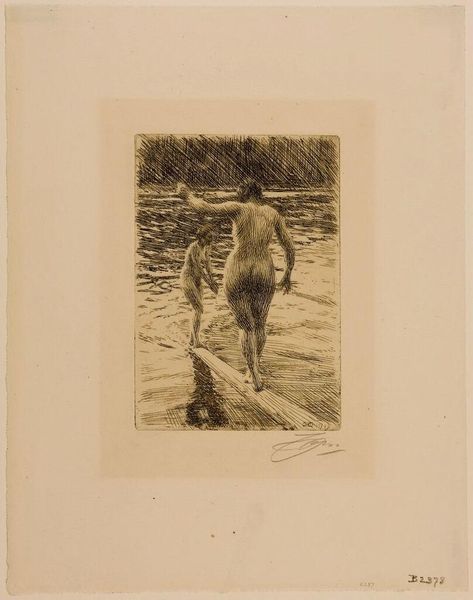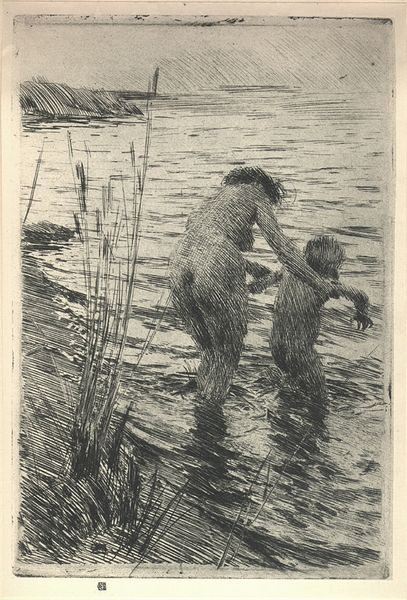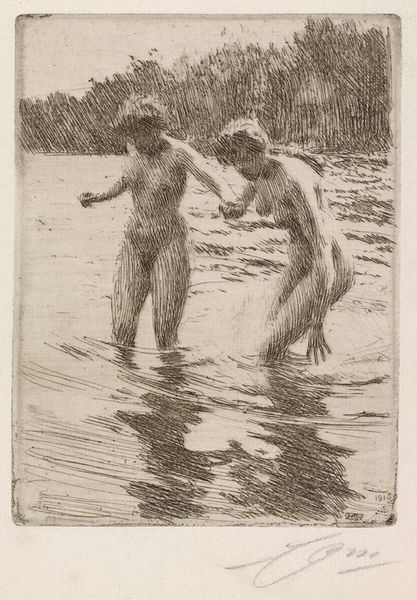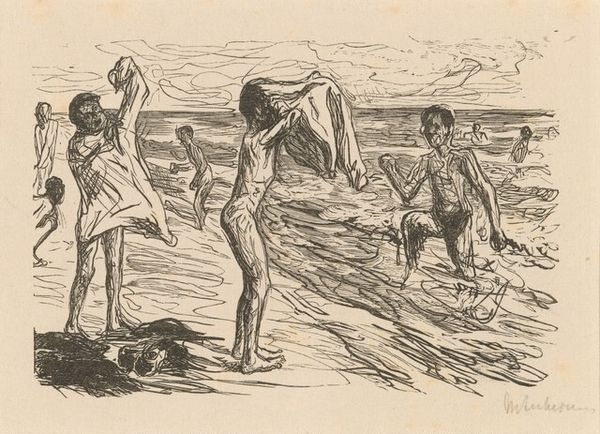
drawing, etching
#
drawing
#
etching
#
landscape
#
figuration
#
nude
#
realism
Copyright: Public Domain: Artvee
Curator: Let’s discuss Anders Zorn’s 1913 etching, "Seaward Skerries." The subject matter is, on the surface, traditional: nudes in a landscape. Editor: Yes, the figures have a delicate quality, and there is so much detail despite it being just an etching! I’m struck by the contrast between the smooth skin of the figures and the rough texture of the rocks. What can we say about how the etching process itself impacts how we view this artwork? Curator: Absolutely. Let’s think about that relationship between skin and stone in the context of labour and the tools that made this image. What does it mean to produce a picture like this using such a mechanical, reproductive method? Consider the copper plate—its material reality, the time spent etching it, the physical labor. The image hints at leisure and escape, but the process is rooted in industry. Is Zorn challenging or reinforcing class divisions here? Editor: That’s a really interesting point – I never thought about the act of *making* the artwork versus its apparent message. So the medium, being a mechanically reproduced etching, creates a tension with the subject, of supposed leisure. Does Zorn's choice to render the nudes in this way influence how the female body is perceived and commodified? Curator: Exactly. How does mass production and the male gaze play into this landscape with the female nude? And where do traditional art history frameworks get us in questioning this dynamic? Is it fruitful to contrast these images with works by women etching images in this era? Editor: This definitely gives me a new perspective! The idea of examining art through its materials and means of production helps to reveal so many layers I hadn't considered before. Curator: I agree, and thinking critically about production helps us challenge aesthetic notions in art, and beyond it.
Comments
No comments
Be the first to comment and join the conversation on the ultimate creative platform.
